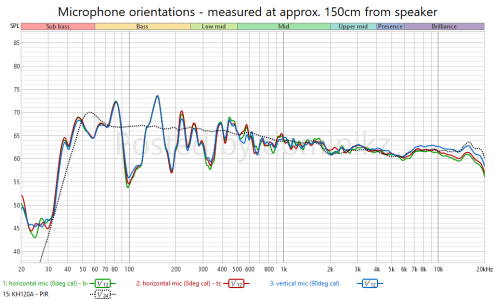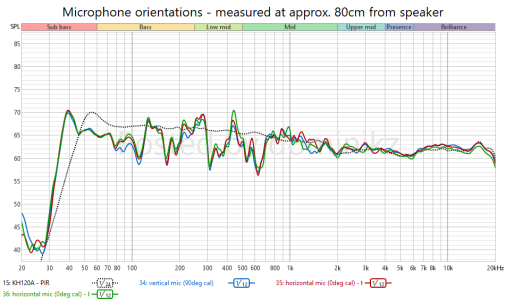dominikz
Major Contributor
- Joined
- Dec 31, 2024
- Messages
- 735
If you only apply RoomFit at low frequencies (which I'd recommend) mic orientation is basically irrelevant.Quick question: Should the microphone be pointed directly at each speaker, or kept in the sweet spot for both channel measurements?
If you'd like to EQ higher frequencies as well, or if you just want to be as precise as possible, I'd advise to put the mic in the sweetspot, point it up to the ceiling, and use the 90° mic calibration file. This way the mic response is identical (and correct) for sounds coming from all directions in the horizontal plane.



